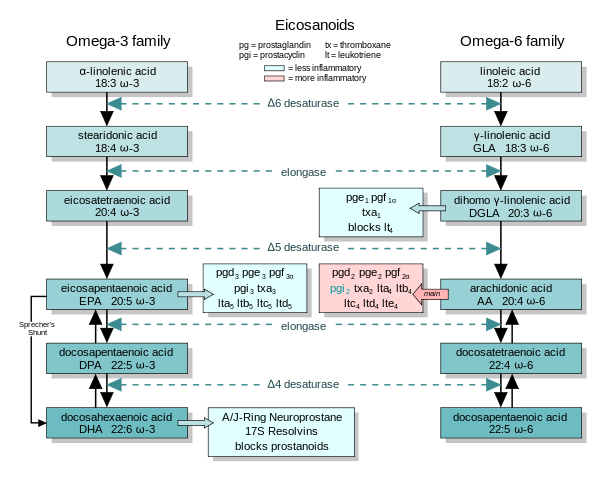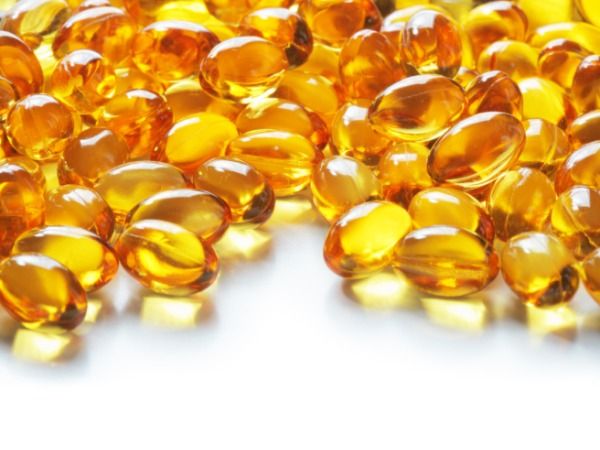What is fish oil?
Fish oil is, well, oil from fish.
It’s rich in two specific groups of omega-3 fatty acids known as docosahexaenoic acid (DHA) and eicosapentaenoic acid (EPA). DHA and EPA, along with alpha-linolenic acid (ALA), found in things like flax and walnuts, fall under the subheading of omega-3 fatty acids. (See All About Healthy Fats for more.)
EPA and DHA are often cited as being the beneficial components of fish oil. EPA and DHA actually originate in algae, which is the base of the food chain for fish. Fish consume these algae and thus concentrate high amounts of the beneficial fats.

Why is fish oil so important?
Overall health
Omega-3s are very important for health, including:
- cardiovascular function
- nervous system function and brain development
- immune health
Research shows that low DHA consumption (and blood levels) is associated with memory loss, difficulty concentrating, Alzheimer’s disease and other mood problems.
Cell membranes
Essential fats have an integral role in promoting cell health.
Cells in the human body have a fatty membrane (known as the lipid bilayer). This membrane is semi-permable: It regulates what gets into the cell and what goes out of it. The fluidity of cell membranes depend on the fatty acid composition of the diet.
- If the fatty membranes surrounding brain cells are relatively fluid, as they are with lots of omega-3s, then messages from neurochemicals such as serotonin can be transmitted more easily.
- On the other hand, if people eat too many saturated fats (which are solid at room temperature), without enough omega-3s, then these membranes become more rigid, and stuff can’t get through.
Cells also require these good fats for repair and regeneration.
With lots of omega-3s, muscle cells become more sensitive to insulin, while fat cells decrease. This may mean that the body can divert more nutrients to muscle tissue.

Metabolic health
Finally, DHA and EPA can increase metabolism by increasing levels of enzymes that boost calorie-burning ability.
What you should know
We can’t make omega-3 and omega-6 fatty acids in our bodies, so we need to get them from our diets.
Omega-3 to omega-6 ratio
It’s easy for us to get omega-6 fatty acids. These are found in plant oils, for instance, and factory-raised animals (which are fed a lot of corn and soy) will usually have a lot of omega-6 too. (See All About Plant Oils for more.)
But it’s hard for people in Western countries to get omega-3 fats from dietary sources. We eat a lot more processed foods and a lot less wild game and plants than our ancestors did. And we don’t usually eat things like snails and insects, which are also high in omega-3s, although many folks worldwide still eat these as part of traditional diets. We rely heavily now on omega-6 vegetable oils.
We evolved with a fat intake ratio of about 1:1 omega-3 to omega-6 fatty acids. Now, it’s closer to 1:20.
Because omega-3s and omega-6s compete with each other for space in cell membranes and the attention of enzymes, the ratio matters more than the absolute amount consumed of either fat.
Fat heads
When it comes to fat intake, you (and your cells) really are what you eat.
Years of research has linked lower fat diets with aggression, depression, and suicidal ideation. Over time, the cells in your brain take on the dietary fat you consume. DHA is the active fat in the brain, and especially important throughout developmental stages.
Depletion of fish oil resources
About 1/3 of the world’s total fish catch goes toward fish meal/oil for farmed fish and other animals. Many open ocean fish like menhaden, anchovies, herring and mackerel are caught mainly for this purpose. Competition for fish meal/oil can drive up the price of fish, which pushes this food source out of reach for many of the world’s poorest.
For more, see All About Eating Seafood.
Summary and recommendations
Aim for 3-9 daily grams of total fish oil (about 1-3 grams of EPA + DHA) per day from a supplement company that doesn’t contribute directly to the depletion of fish (e.g., they use primarily fish discards).
Look for small-fish-based formulations (e.g. herring, mackerel). Small fish are lower on the food chain and less likely to accumulate environmental toxins. Or choose krill oil or algae oil (see All About Algae Supplements).
Avoid cod liver oil.
Avoid trans fats; they can interfere with EPA & DHA in the body.
If you find yourself using higher amounts of corn, cottonseed, and sunflower oil (omega-6 rich vegetable oils), aim to use fewer of those, which will negatively alter your fatty acid ratio.
For extra credit
The amount of DHA in a woman’s diet determines the amount of DHA in her breast milk.
Omega-3 fats are not typically used in processed foods because of their tendency to oxidize.
NIH researchers have said that the billions we spend on anti-inflammatory drugs such as aspirin, ibuprofen, and acetaminophen is money spent to undo the effects of too much omega-6 fat in the diet.
It’s hypothesized that populations may drift toward a lower omega-3 intake because a faster metabolism (from high omega-3 intake) increases the need for food and the possibility of hunger.
Fish oil seems to be safe (except for those on blood thinning medications).

Eat, move, and live… better.©
Yep, we know… the health and fitness world can sometimes be a confusing place. But it doesn’t have to be.
Let us help you make sense of it all with this free special report.
In it you’ll learn the best eating, exercise, and lifestyle strategies – unique and personal – for you.
Click here to download the special report, for free.
References
Click here to view the information sources referenced in this article.




Share